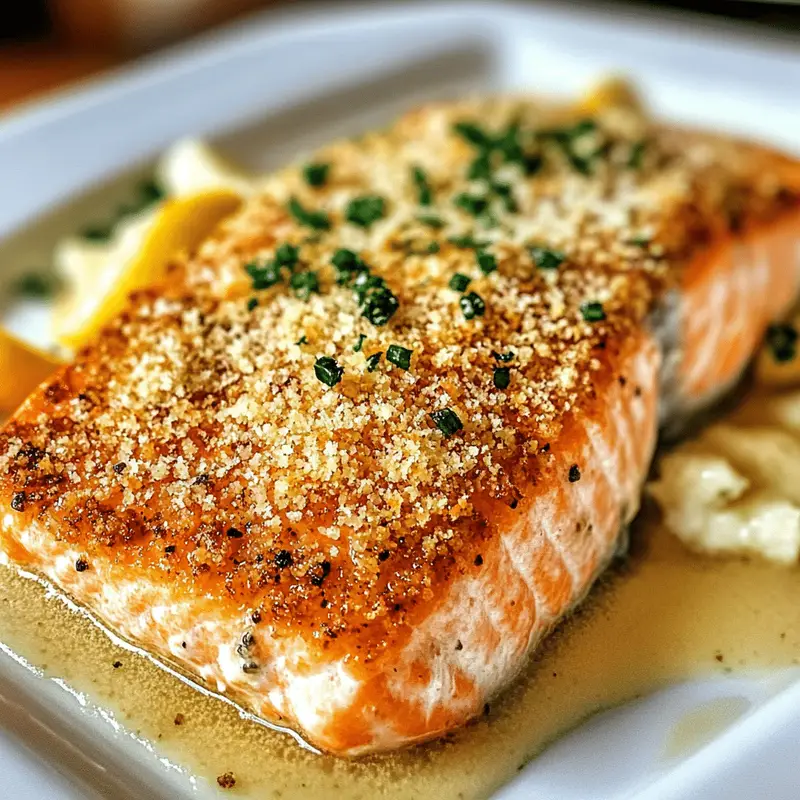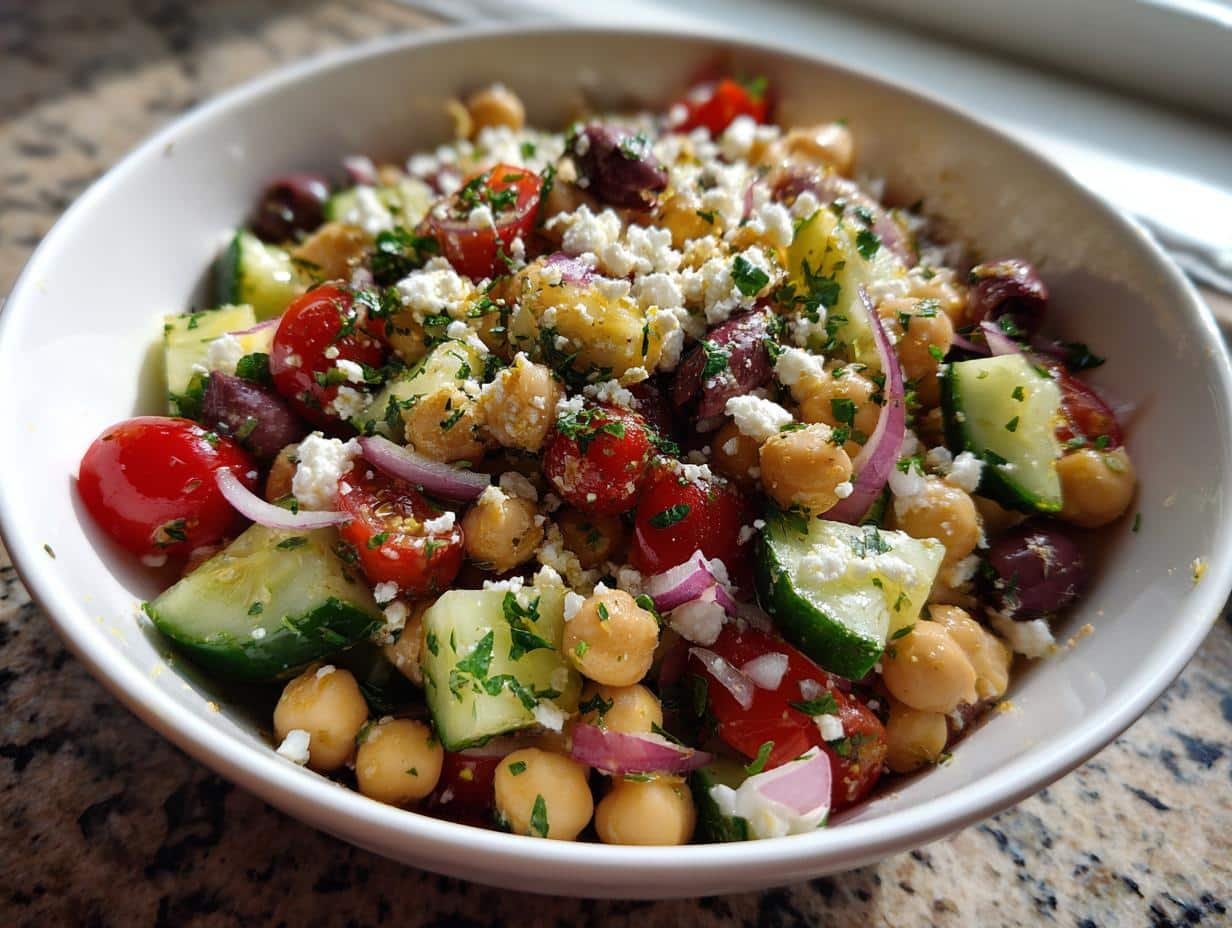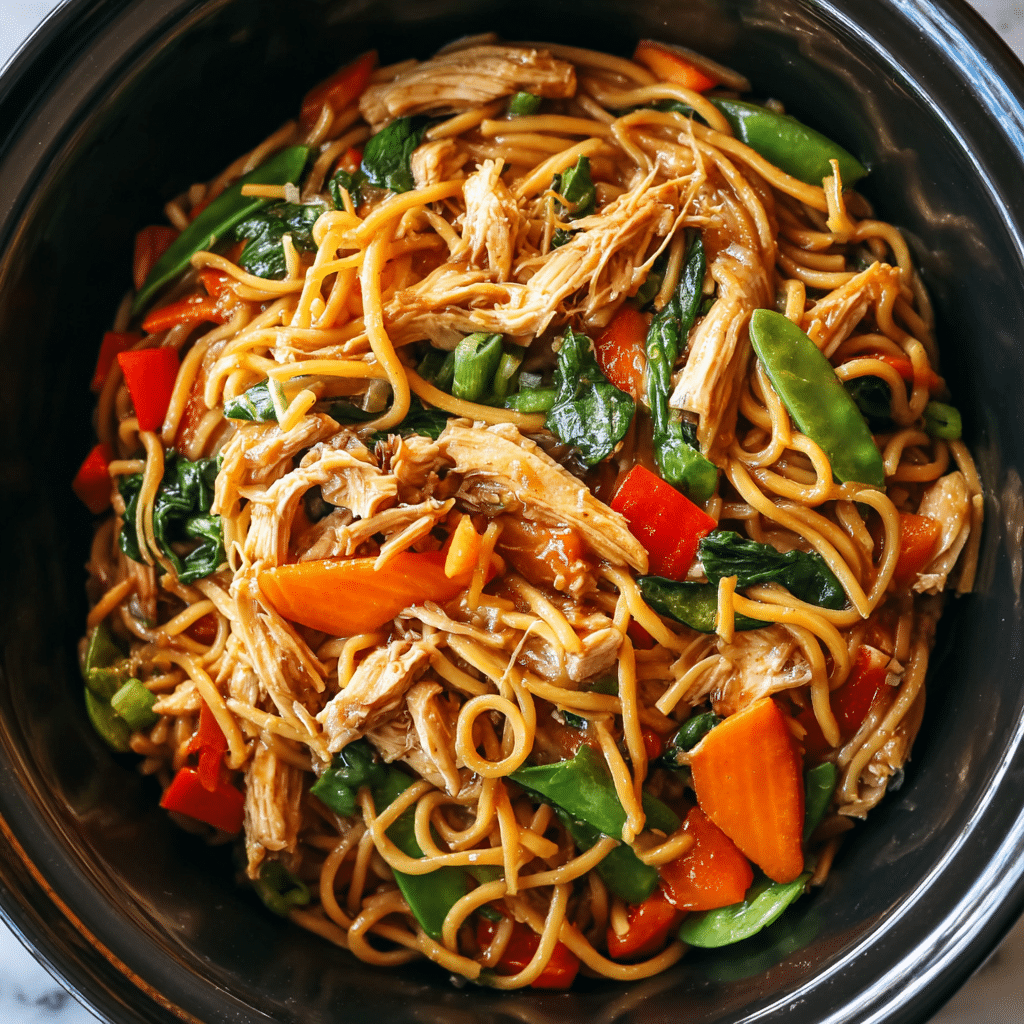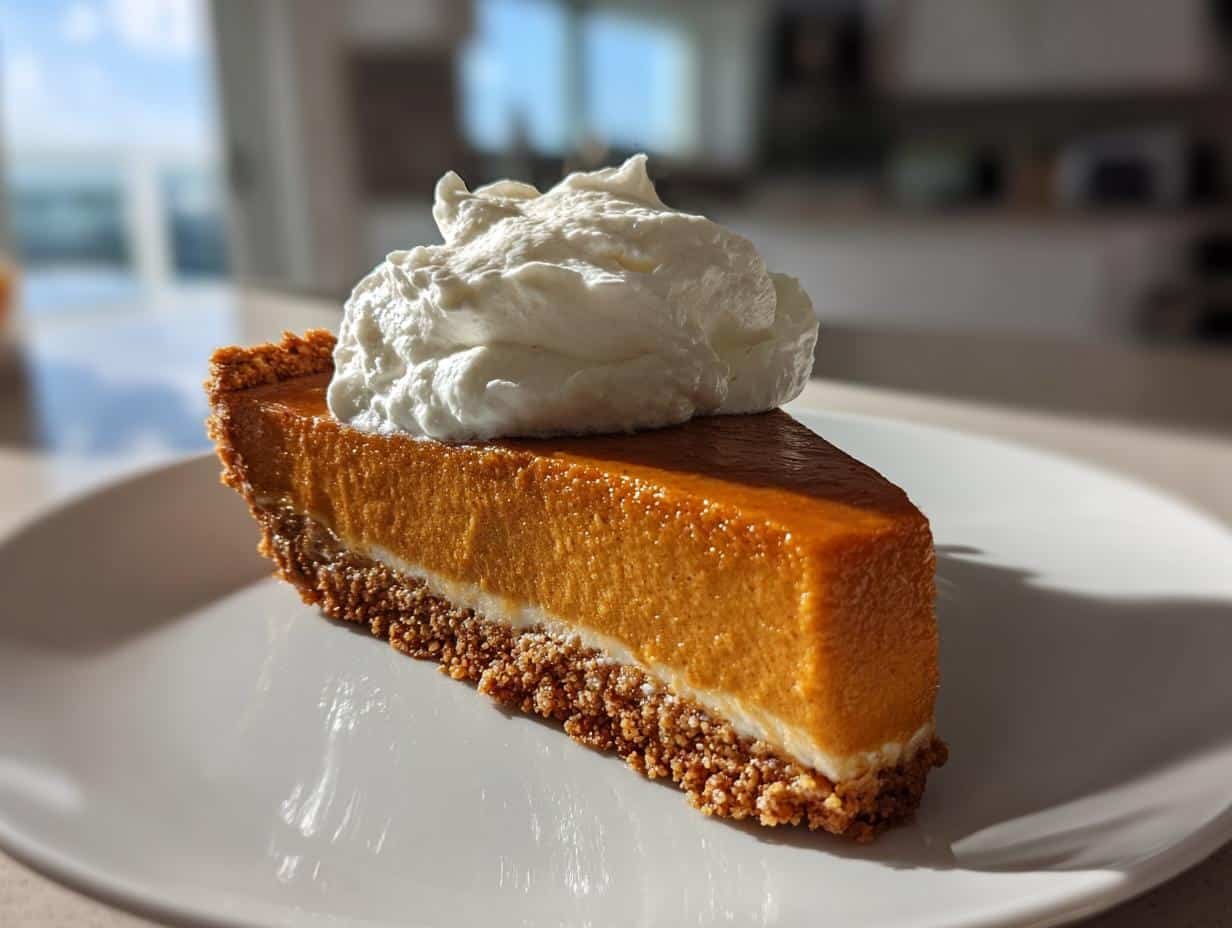Salmon nights were always a big deal in my home growing up. My mom had a way of turning a simple fish fillet into something we all looked forward to, especially when she added that crispy topping. That golden crust, made with Parmesan and breadcrumbs, was her signature touch—and now it’s mine too. This Crispy Parmesan Crusted Baked Salmon recipe brings back those warm, savory memories, but with a fresh, weeknight-easy twist. It’s the kind of dish that feels fancy but is incredibly simple to pull off. Whether you’re serving guests or just treating yourself, this recipe delivers crunch, flavor, and satisfaction in every bite. You’ll also find tips here for getting that perfect crisp (yes, like the restaurants do!), and answers to common questions like baking temp, crisping techniques, and what to do when your salmon just won’t cooperate.
Let’s get you one step closer to a crispy, cheesy, juicy salmon dinner you’ll want to make again and again.
Why This Crispy Parmesan Crusted Baked Salmon Works So Well
The Magic Behind the Parmesan Crust
There’s something irresistible about the combo of grated Parmesan, crunchy panko breadcrumbs, and a touch of garlic and paprika. When baked, this mix forms a crispy golden layer that locks in moisture and adds flavor without overwhelming the salmon. The secret? A quick layer of Dijon mustard and mayo beneath the crust. It helps everything stick, and adds subtle tang and richness that balances the saltiness of the cheese.
This technique isn’t just great for salmon—it’s something I’ve used on everything from garlic Parmesan grilled chicken to baked cod. It’s a reliable way to get that crisp texture at home without a frying pan or deep oil.
Crispy But Still Moist: The Restaurant-Level Trick
Ever wonder how restaurants get salmon crispy without drying it out? It’s about balance. The mayo layer not only helps the crust adhere but acts as a moisture barrier during baking. Baking at 400°F is ideal—it’s hot enough to crisp the top without overcooking the inside. That’s key to avoiding the dreaded dry texture.
Another tip: let the salmon rest for a few minutes before serving. This helps juices redistribute and keeps everything tender. Paired with something fresh like this blackberry basil grilled chicken salad, the textures really shine.
Getting the Perfect Bake – 350 or 400?
Why 400°F Is the Sweet Spot for Crispy Salmon
One of the most common questions is: Is it better to bake salmon at 350 or 400? While 350°F may seem safer, especially for delicate proteins, it won’t give you that golden, crisp topping we’re aiming for. At 400°F, the salmon cooks fast enough to stay juicy inside while the Parmesan-panko crust turns irresistibly crunchy and golden.
This temperature works especially well when paired with a shallow baking dish or parchment-lined sheet pan—something that lets the air circulate around the fish. You want that dry heat to hit the topping directly. If you’re nervous about drying it out, just remember: the layer of mayo and Dijon mustard helps retain moisture while boosting flavor.
Try baking your salmon this way and serve it alongside something vibrant like this sun-dried tomato pasta salad or the tangy punch of southern potato salad to create the perfect balanced plate.
Time and Texture: Watch the Clock, Not Just the Temp
Cooking time depends on the thickness of your fillets. For an average 6-ounce fillet, 15–20 minutes at 400°F is ideal. Start checking at 15. The crust should be golden and crisp, and the fish should flake easily with a fork.
To avoid overcooking, insert a meat thermometer into the thickest part of the fillet. It should read 125°F for medium-rare and 130–135°F for medium. Salmon continues to cook slightly after being removed from the oven, so pulling it just shy of your target is a smart move.
Pairing this dish with a fresh citrus-based side like lemon garlic shrimp and asparagus creates a restaurant-quality dinner with little effort.
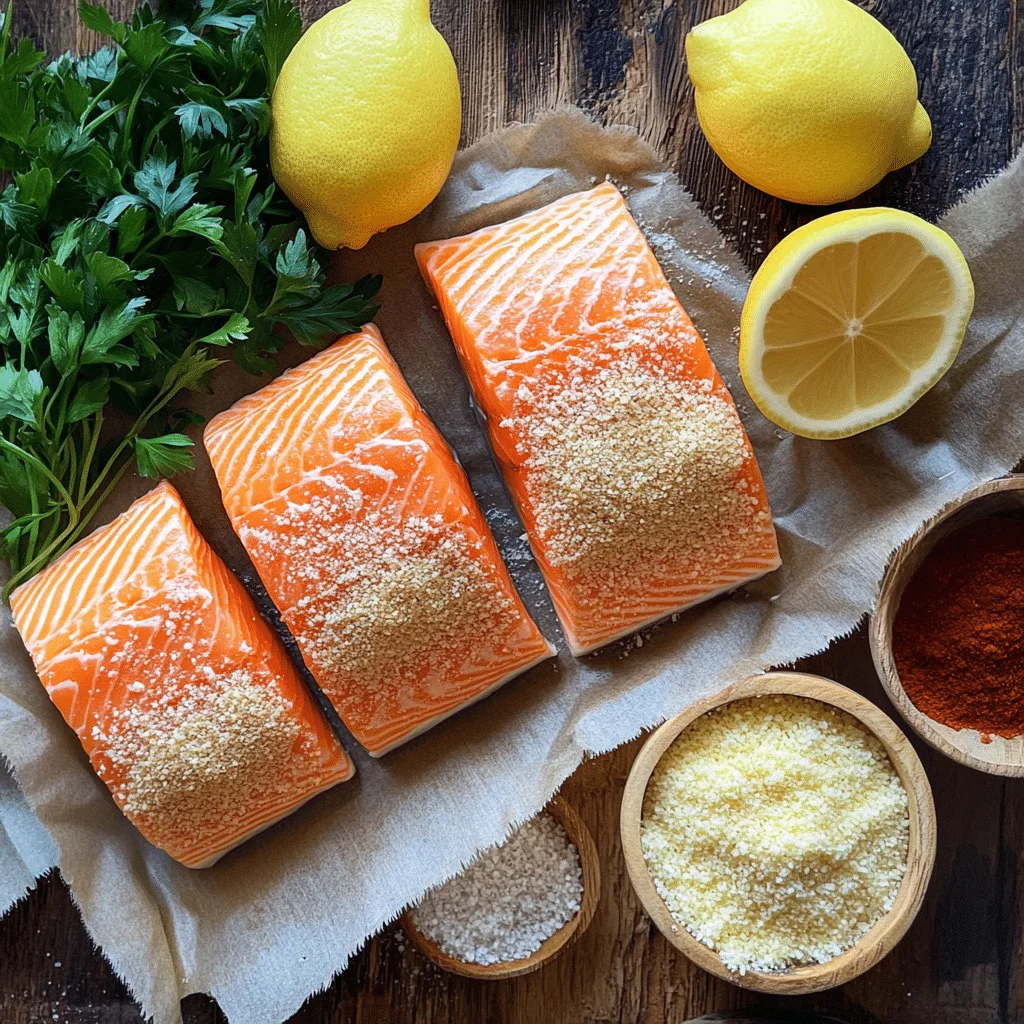
How to Bake Salmon to Be Crispy Every Time
Step-by-Step: Building the Perfect Crispy Topping
If you’ve ever struggled with soggy-topped baked fish, it’s usually due to too much moisture or a low baking temperature. Here’s a simple breakdown to get it right every time:
- Pat the salmon dry. Excess moisture ruins crispiness.
- Spread the mayo and Dijon mixture over the top. This adds moisture barrier and flavor.
- Press on the topping. Mix equal parts grated Parmesan and panko breadcrumbs. Press it firmly so it sticks well and forms a solid crust.
- Bake uncovered at 400°F.
- Let it rest for a few minutes after baking to firm up the crust.
This method is especially helpful if you’re aiming for crisp edges like those found in our crispy rice salmon recipe, which also uses direct heat to create crunch.
For an elevated side, try pairing your salmon with baked cod in coconut lemon cream sauce to give your meal a seafood duo effect—light, crispy, and totally dinner-party worthy.
How to Tell When the Crust Is “Crispy Enough”
The Parmesan crust should be golden brown and slightly firm to the touch. If you gently tap it with a spoon and hear a light crunch, it’s ready. Don’t wait until the crust is too dark—this can mean your salmon is overcooked.
Pro tip: Broil the fillets for the last 1–2 minutes if you want to intensify the crispiness. Just keep a close eye on them!
Why Your Baked Salmon Might Not Be Crispy (And How to Fix It)
Common Mistakes That Prevent Crispiness
If your salmon turns out mushy or soggy on top, don’t worry—it’s fixable. Here are the top reasons it may not be crisping up properly:
- Too much moisture
- Low oven temperature
- Skipping the crust press-down
Even the crispiest dishes—like glazed apricot chicken—rely on moisture control and heat timing to deliver texture.
Easy Fixes to Try Tonight
- Use a wire rack to allow airflow underneath.
- Broil for 1–2 minutes to add crisp.
- Stick to Panko, not regular breadcrumbs.
Another favorite pairing option is this Mediterranean lemon dill chicken bowl, or even a bold starter like American flag taco dip to kick off your meal.
FAQs About Crispy Parmesan Crusted Baked Salmon
How do restaurants get salmon crispy?
They use high heat and dry surfaces to crisp the skin or crust. At home, 400°F with a good topping and broil finish mimics that technique well.
Is it better to bake salmon at 350 or 400?
400°F ensures the topping crisps up while the salmon stays juicy. It’s the sweet spot for this method.
How to bake salmon to be crispy?
Dry the fillets, use a creamy base, press on your topping, and bake at 400°F. Broil briefly if needed.
Why is my baked salmon not crispy?
Too much moisture, low heat, or a soft topping can prevent crispiness. Use a wire rack and higher temp for better results.
Conclusion
Baking salmon should never feel intimidating, especially when you’re armed with the right tips for getting that perfect crisp. This Crispy Parmesan Crusted Baked Salmon recipe blends bold flavors with simple steps, making it a repeat-worthy dinner whether it’s a busy Tuesday or a relaxing Sunday. From personal family traditions to modern techniques, this dish is proof that comfort food can still be elegant and full of texture.
Pair it with a fresh side, try the broiler trick, and don’t be afraid to experiment. Once you make this recipe, you’ll realize that crispy, restaurant-style salmon is totally doable right from your own kitchen.
FORE MORE RECIPE JOIN PINTEREST
